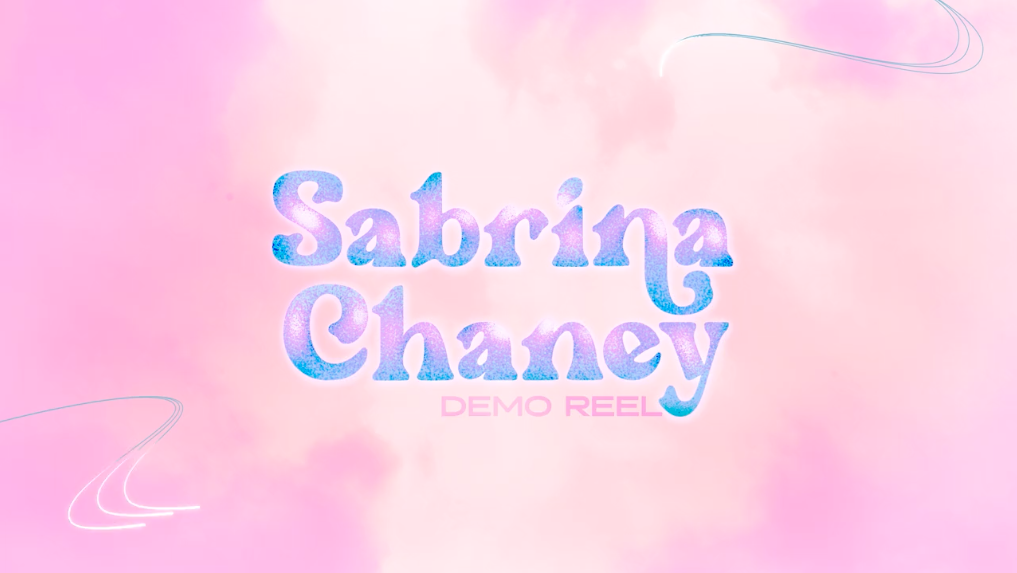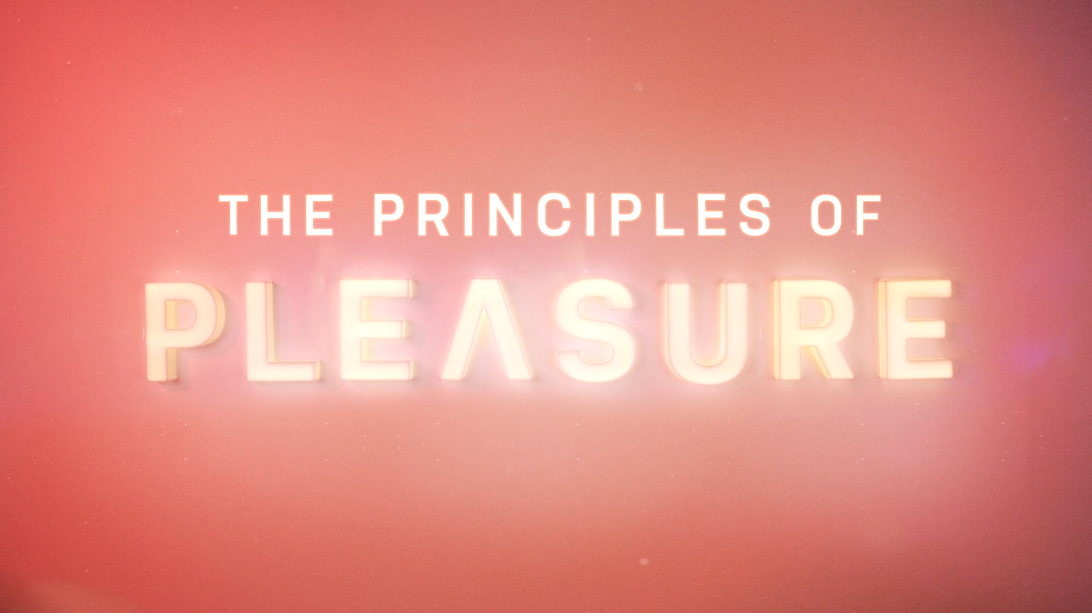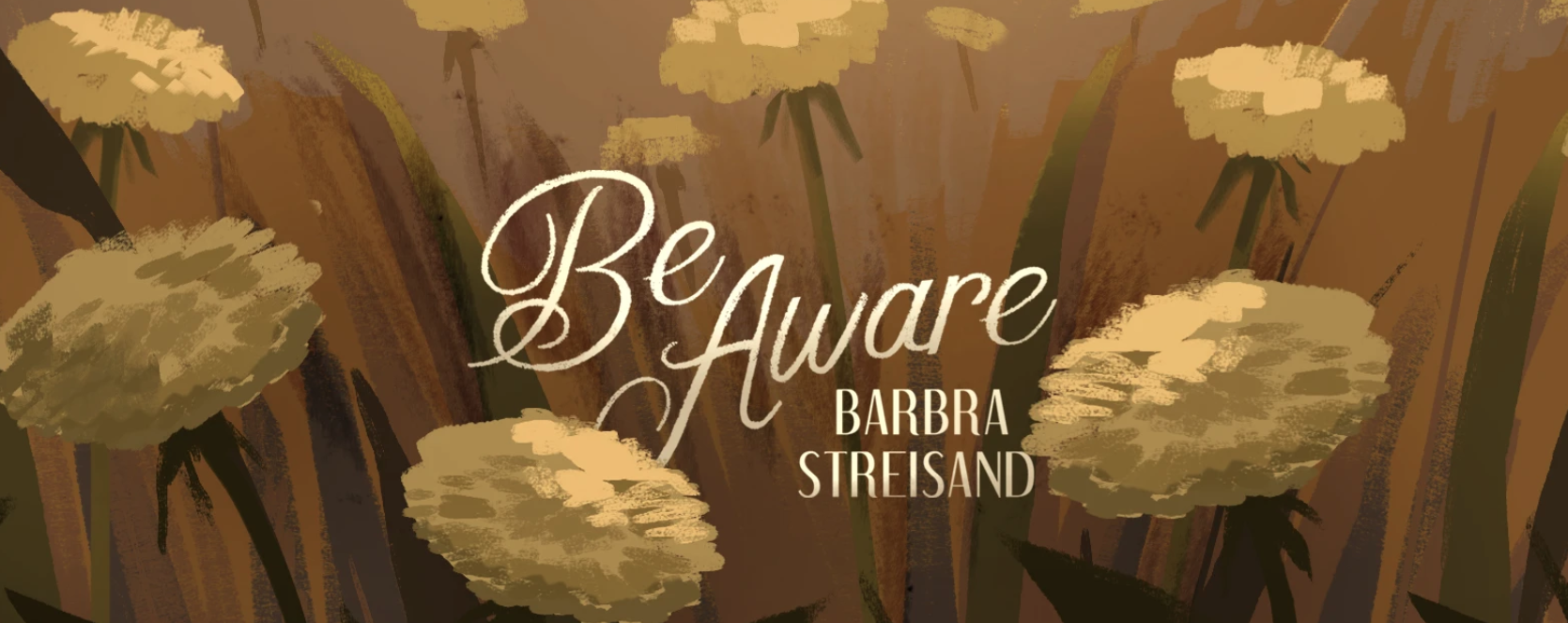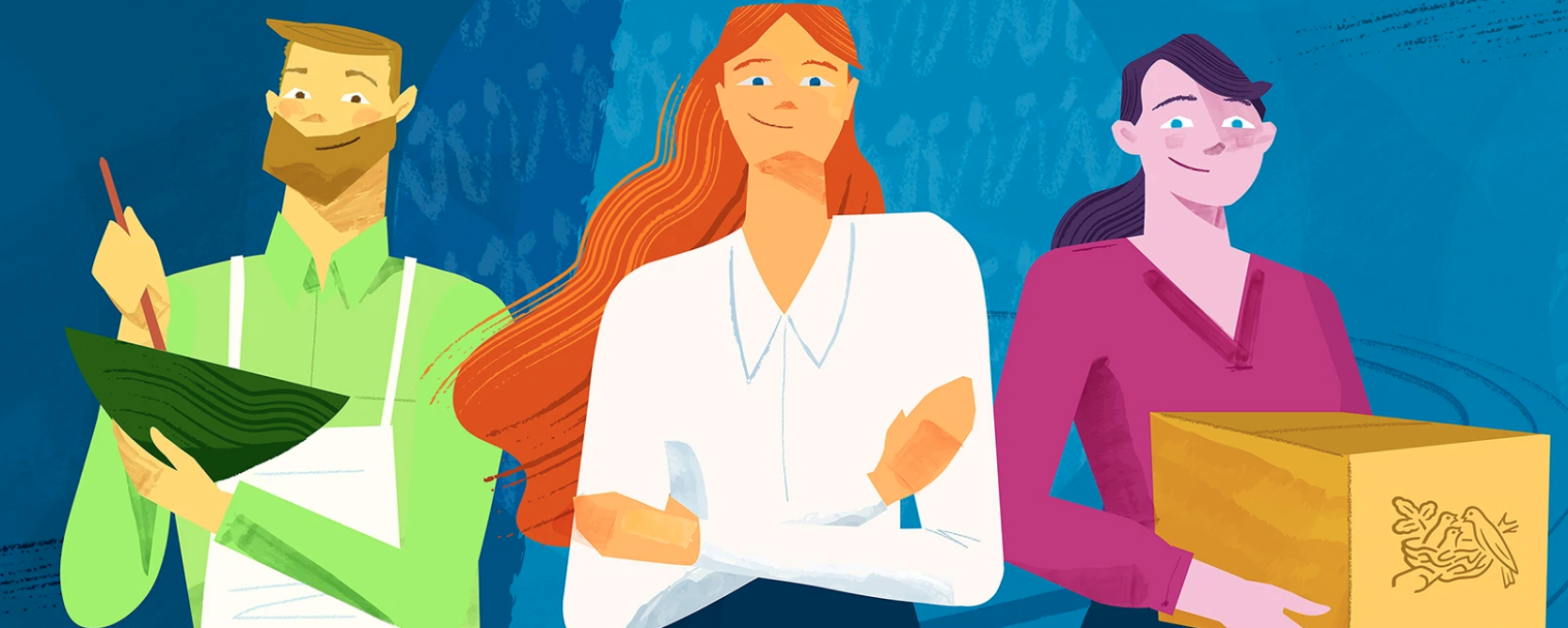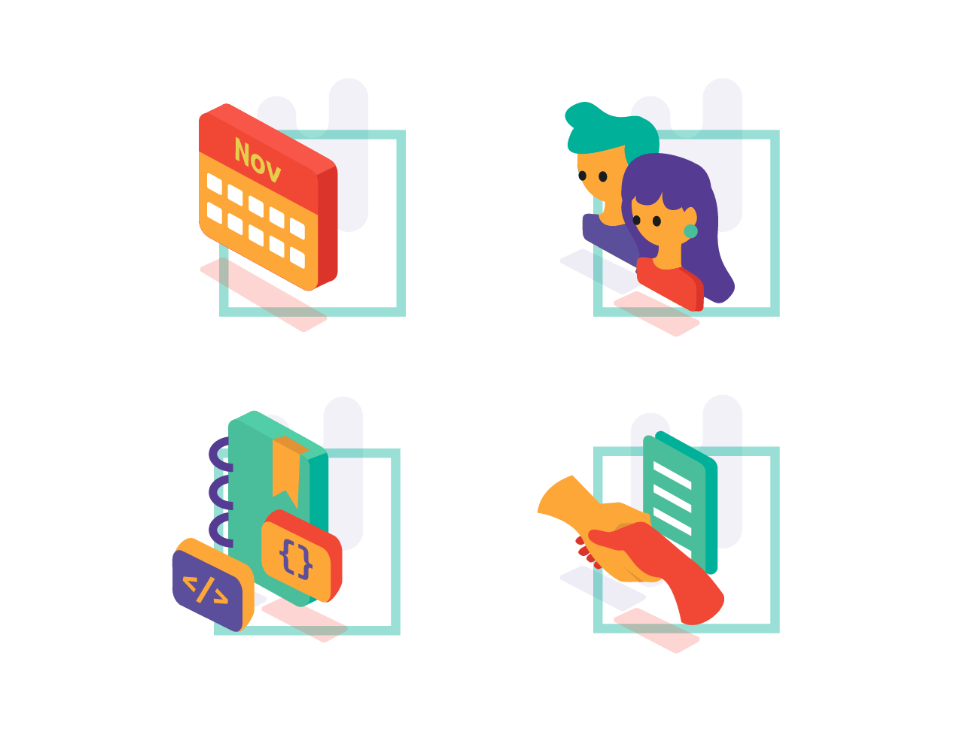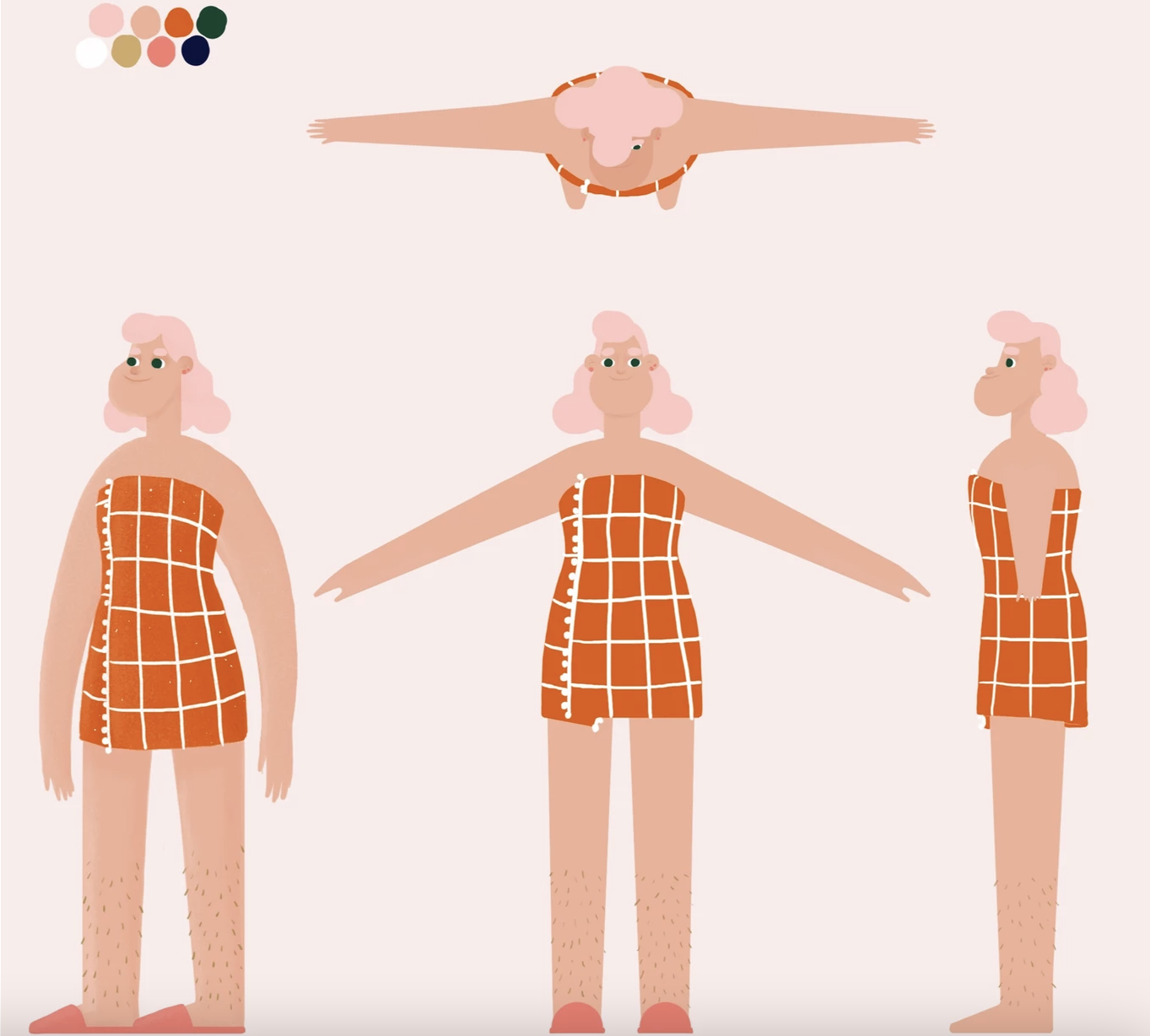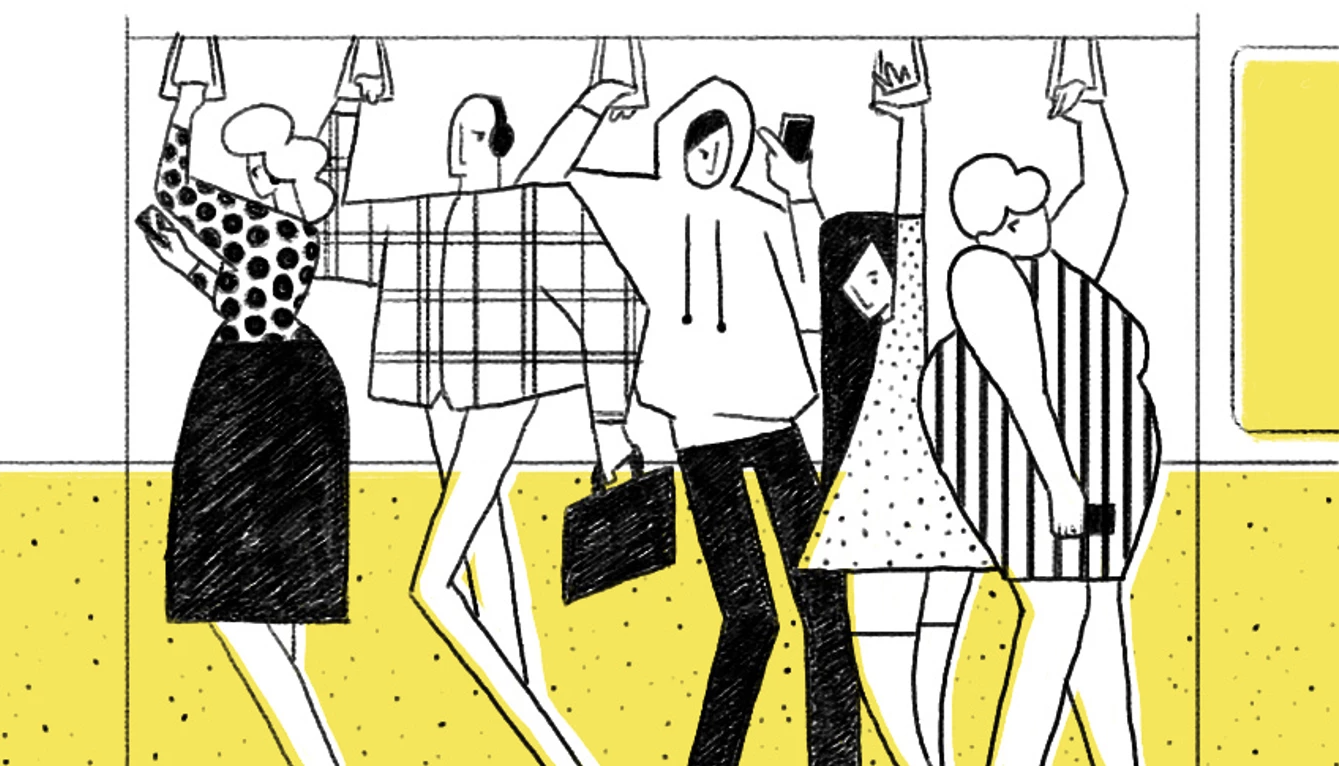Takeover Tuesday with Alina Marsh
i
An interview with Alina March: a kid-lit illustrator based in upstate New York passionate about colors and all things round and cute.
Interviewer: Matea Losenegger
Read time: 5min
Matea:
Hi Alina! Thank you so much for taking the time to participate in our series. Can you please introduce yourself and your work?
Alina:
Of course! My name is Alina Marsh and I’m a children’s book illustrator. I'm 23 years old and I live in upstate New York. Though I am in the early stages of my artistic journey, one thing I know for certain about my work is that it’ll always be fun and silly.
Matea:
What sparked your interest in art and illustration?
Alina:
I've always had an interest in art ever since I was a kid. Anything that has to do with the act of creating something from your imagination or expressing yourself in a way artistically is something that I've always been drawn to. Before I decided to learn to draw I considered myself a writer. As a child, I filled so many composition notebooks with fantasy stories and fan-fictions of characters (guilty as charged). I wanted to design my own characters for the stories that I wrote so I decided to learn how to draw. I realized drawing was pretty fun, so I never really stopped
Matea:
On your site you call yourself a kid-literature illustrator. Is there a specific path or different steps an artist must take when pursuing this pocket of the field?
Alina:
I guess you could say there's a difference when it comes to being an illustrator for children's books and children's media I think there's a bigger emphasis on collaborating with agencies compared to the freelance perspective of a general illustrator. There is a bigger benefit when you are working with a company or an organization that can actively be your guide to getting you projects especially if you are exclusively as illustrated not an author as well. Regardless of that, I also think that having a genuine interest and understanding of children's entertainment and media is important.
Matea:
Do you have a dream project or any specific stories you're itching to tell with your artwork?
Alina:
I have so many dreams and so many things! I want to do I just want to do all of the things! I think that's my biggest problem sometimes... I’d love to collaborate with a big company like Disney or Target for a merchandise project. I have such a love for illustrating specifically for physical items and seeing my work being showcased as part of someone’s style or personality.
Matea:
I absolutely love the way you utilize light and color. How did you develop your style and what is your process in creating these lovely pieces?
Alina:
Reading and observing art is just as important as actually picking up a pencil and making in my opinion. So many things I've learned about creating art, especially color theory, are simply by reading and understanding the thought process of another (way better) artist than myself. I think that there's a certain sort of patience and discipline that comes with learning light and color because it's such a complicated topic to study, but I do think that having that eagerness to learn is going to be just as important as actually practicing drawing every day. In terms of my process, I wouldn't necessarily say I go on intuition, but it's more of I go on the silly little feeling in my heart, cue the cheesiness! If something makes my heart flutter then I want to paint it! I am very much attracted to artwork that fills me with dopamine, which is why I love cute things and colorful things.
Matea:
From digital to gouache, watercolor, colored pencil and clay you work with an impressive variety of mediums. How do you decide which medium you want to use and is it project specific?
Alina:
It depends on what I'm itching to grab for. Although I tend to use digital as my main form of producing art, I don't want to be tied down to a specific medium just because I tend to get bored easily or I can sometimes get burnt out if I use the same media for too long. I do tend to gravitate towards digital a little bit more just because of the portability and the convenience of it, and I typically use it for larger products or illustrations that I plan on creating products or printing out just because I feel like I can get in the nitty-gritty details. Traditional media is where I can let loose and have fun.
Matea:
Are there any mediums or styles you'd still like to explore?
Alina
I'd love to try animation. In my freshman year of college, I majored in animation and illustration but switched to just visual arts because I wanted to focus on illustration specifically. At the time, I was intimidated by the process of animation and I didn't think I had the attention span to keep up with it. But I'd still like to try and learn some of the basics again. I’d also love to try 3D modeling. it's a concept I still can't wrap my head around but I would love to make 3D models of cute little characters someday, and maybe make my own toys!
Matea:
The passion for your art really shines through in your work. How do you stay motivated to create and do you have strategies for combating burnout?
Alina:
I don't have a definite answer for this because I'm still trying to figure that out myself. I do think that your mind and your body are super connected so if you're not mentally feeling well then you're probably not going to be producing or creating art that you like, if you're even making art at all at that moment. I don't necessarily believe in motivation because if you rely on a will that you know comes and goes at random then you're just going to be wasting time. I think that if you are consistently working on placing yourself in a state of mind where you feel healthy enough to perform, that passion for making art will just come along with it if it’s something you genuinely enjoy. Sometimes I think it can be blocked when we aren't feeling well either physically or mentally. With burnout, I have a silly analogy, if you keep burning your toast, maybe try using a different kind of bread, get it?
Matea:
Are there any projects you're excited to share?
Alina:
I think that documenting your process and your thoughts is such a great way to connect with people and also to understand yourself, so I do want to work on filming more videos and perhaps invest some creative energy in a YouTube channel in the future this year. And while I'm still working on my professional portfolio, I want to focus on making art that gets me excited to work on it.
Matea:
Any final advice or takeaways?
Alina:
I don't think I would have gotten anywhere in my artistic journey if it weren't for having a community around me, and I think that's more crucial than ever in this day and age. I can think back to when I was in middle school, asking for critiques and advice on DeviantART, and just the fact that people were willing to look at my art and answer my questions was enough to give me the courage to continue creating. I think that understanding that when people are giving advice or critiquing your art, it's nothing that you should take personally. It should be something you should see from more of a professional point of view and learn to be better at your craft rather than feeling put down about your art. You should be willing to always seek help regardless of what stage you're in, I think it's always important to have someone share their perspective or give you guidance in any sort of way because I don't think you can do anything alone. Art will always be a team effort even if it's something that's that has independent is painting a picture.
Takeover Tuesday with Sabrina Chaney
An interview with Sabrina Chaney: Post-Production Lead at Mighty Oak in Brooklyn.
Q&A with Sabrina Chaney.
Read time: 5min
Mack Garrison:
Sabrina! Thanks so much for taking the time to participate in our Tuesday Takeover series. For those not familiar with you and your work, can you provide a little background on yourself and your creative style?
Sabrina Chaney:
Hey! I was born and raised in Houston, Texas. I went to school for Animation at the Savannah College of Art and Design. Now I work as the Post-Production Lead at Mighty Oak in Brooklyn, New York. My creative style is an amalgamation of all my interests: comics, animation, music videos, sculpture, and patterns. My main passion is stop-motion animation, so typically I like to imbue whatever I make with some kind of handmade element or texture.
Mack Garrison:
Oh man - love the word imbue! How did you initially get into the motion design industry?
Sabrina Chaney:
After I graduated from college I knew my portfolio wasn't where it needed to be. I was applying everywhere under the sun and it felt like every email was being swallowed into the void. Nothing really kicked off until I took a few School of Motion courses and re-made my portfolio and reel from scratch while living with my parents. You can see the result of that work here. Matt Vojacek from Made by Things was the first person to take a chance on me and give me an internship - working remotely long before Covid, might I add - and that started my freelancing career which I continued for three years after I moved to Brooklyn in 2017.
Mack Garrison:
There are so many talented folks in our industry, who are some of the people you look up to?
Sabrina Chaney:
The people who inspired me the most when I was starting out are all pursuing their own big projects these days. Isaiah Saxon of Encyclopedia Pictura is directing a movie for A24. Charles Huettner, Benjy Brooke, and Sean Buckelew are adapting the Scavengers short into a TV series for HBO Max. In general, I look up to people with big imaginations who do their own thing independently and feel compelled to share their work (remember Late Night Work Club? Bring that back!). Outside of mograph, I adore the work of Meredith Gran (of Octopus Pie and Perfect Tides fame) and Jonathan Bree. They are both master storytellers in their respective fields, and I feel transported by the worlds and characters they've created.
Mack Garrison:
You work at a really cool studio called Mighty Oak who specializes in stop motion, 2D, 3D and mixed media! What's it like working there?
Sabrina Chaney:
I had already built a working relationship with Mighty Oak while I was freelancing, and they were always my favorite client to work with. I joined the team full-time in March 2020. Everyone on the team is a creative problem-solver, and we bring our unique approach and point of view to every brief. Stop-motion is our favorite medium to work with and we bring that tactile sensibility to every project, whether it's animated in-camera or animated completely digitally. As the compositor, I get to solve a new puzzle every day, which makes my work rewarding and enjoyable. I love the variety of work that we attract, and I especially love when we have the opportunity to push ourselves with new techniques we've never tried before. Like a mighty oak, we are continuing to grow every year!
Mack Garrison:
What are some of your favorite projects you've had a chance to work on?
Sabrina Chaney:
During 2020 and shortly after I was brought on staff, we created animated sequences for Mary J Blige's My Life which is now streaming on Amazon. That project holds a special place in my heart because whether the world was falling apart or I had something going on in my personal life, I always had something beautiful to look forward to at work. It was also the longest-running project we had worked on as a team, so it felt good to practice consistency and surpass our benchmarks together as the months went by. We developed a painterly frame-by-frame 2D workflow using Procreate and After Effects, inspired by the work of our creative director Michaela Olsen. I can look back on what we made and feel proud of what we accomplished. I was also invited to the film premiere in Lincoln Center along with the rest of our team- and Mary J Blige herself was at the afterparty! We made direct eye contact! I'll never forget it.
Similarly, in 2021, we created animated sequences for the Netflix series Principles of Pleasure. Each episode has a different art direction depending on the given topic, and we used a mix of stop-motion animation with props, pixelation with human actors, collage, frame-by-frame 2D animation, and motion graphics to illustrate topics relating to sexual education and female pleasure. We used a lot of the lessons we learned during 2020 and applied it to the production of PoP. We harnessed the momentum of the previous year to create something fresh and different. Those projects combined offered us a lot of fun and challenging work during the pandemic, which is something I'm still grateful for.
Mack Garrison:
Looking at your reel, you've really done a phenomenal job with your compositing skills! Could you talk a bit about your approach in making a shot feel perfect?
Sabrina Chaney:
Consistency is key. It's not about whether a shot is perfect, it's about whether the shot feels believable. Compositing is a lot like being an illusionist who can do card tricks: of course we may know what lies up our sleeve, but all the audience sees is magic! What I love most about working in After Effects is that there are a thousand ways to achieve a desired result, so there is no "wrong" or "right" approach. It all boils down to the needs of each shot and making sure the hero product or character can shine without any distractions.
Mack Garrison:
What are some things everyone should think about when they're compositing animations?
Sabrina Chaney:
Compositing encompasses a lot of different techniques, including green-screening, rotoscoping/masking, special effects, motion graphics, color correction, and rendering. Each of those skills could be its own visual effects discipline with its own specialized software. I tend to keep everything as simplified as possible to avoid getting overwhelmed, and I find this practice also makes it easier if I need to pass off a shot to somebody else. By simplified I mean things like keeping my project folders organized, using only the most necessary layers in my timeline, and frequently reducing my project to trim down on unnecessary files inside of my .aep. I find that these small acts of tidying up help me stay focused on the compositing work that really matters instead of getting caught up in the weeds, overcomplicating things, and then causing trouble for myself later in a project when I can't make heads or tails of my project file.
Mack Garrison:
Your work and Might Oak's has a very hand-crafted feel. I'm curious what your thoughts are around the development of A.I. Are you worried about what it could do to the industry? And how do you think it will affect the stop motion space?
Sabrina Chaney:
Honestly, I'm very ambivalent and non-threatened by A.I. People have already been creating 3D animation that looks like claymation for years, and projects like The Lego Movie directly reference stop-motion animation techniques. Technically stop-motion has already been made obsolete. People simply love it too much to let it die! If A.I does have a place in the process of creating stop-motion animation, then it'll probably occupy a space much like rapid prototyping technology, which allowed Laika to make characters more expressive using 3D animated faces in Coraline and is now an industry standard practice.
Mack Garrison:
Any advice you'd give to the next generation of creatives?
Sabrina Chaney:
I grew up Extremely Online from middle school through college, migrating from deviantART to Tumblr to Twitter and Instagram in an effort to post and share my work. I never had much of an audience, and I found it more draining than energizing. At the end of the day, I'm not sure how much good it did when it came to actually getting work. By far the best networking connections I've made were from reaching out to people directly via email, using the Internet to do my own industry research, and meeting people face to face at in-person events. Your portfolio speaks for itself. If you feel pressured by social media, I recommend deleting your apps for a temporary period and dedicating the time towards things that inspire you without any plans to share what you've done. Maintaining some semblance of privacy can be intensely freeing, because you're allowed to make mistakes, learn, and experiment without subscribing to trends or comparing yourself to others.
Mack Garrison:
Anything else you'd like to add?
Sabrina Chaney:
I want to place a special shoutout to Panimation NYC! Panimation meetups were how I met many of my current friends and peers right after I moved to New York City when I didn't know a soul. Coming out of the pandemic, I learned how easy it can be to become isolated. It helps to get involved with a community of like-minded people who support each other.
Takeover Tuesday with Katie Trayte
An interview with Katie Trayte: an illustrator based in Washington, D.C as well as the Creative Director at Duke & Duck.
Q&A with Sarah Chokali.
Read time: 5min
Bella Alfonsi:
Hey, Katie! Thanks so much for being a part of Takeover Tuesday. For those who are unfamiliar with you or your work, please tell us about you and what you do!
Katie Trayte:
Thank you so much for inviting me to participate! I love your Takeover Tuesday series.
My name is Katie Trayte and I’m an illustrator based in Washington, D.C as well as the Creative Director at Duke & Duck.
Bella Alfonsi:
Do you have any formal training or are you completely self taught?
Katie Trayte:
I graduated from SCAD with an Illustration degree, but I am fairly self-taught when it comes to animation. I started out of school as an apparel graphic designer for Hollister. So if I made it here, you can too! I always felt a pull towards animation and storytelling, but never really saw where I could fit into the compartmentalized pipelines of feature and tv. When I found the world of motion design I was, in a word, obsessed. I was also what the French call, "Les incompetents". My love of the work made it easy to find motivation in closing my knowledge gap. It was an area where my illustration and graphic design passions could both thrive, and I was so drawn to the experimental styles and trend-setting approaches happening in the field.
Bella Alfonsi:
You have an impressive resume of clients, like Sony, Nestle, and Discovery Channel, just to name a few! What advice do you have for freelancers first starting out who dream of working with clients like these?
Katie Trayte:
I have spent most of my career in-house. From that experience, I would say there’s a huge benefit to being part of a company or studio to get access to those partnerships. Especially if you’re still finding your style and the idea of exploring a lot of different visual directions appeals to you. In-house is also a great place to get a master class on business and sales. Confidence in these skills can help you to feel more empowered to establish and foster relationships with your dream clients as a freelancer.
Bella Alfonsi:
What steps did you take to go from illustrator/designer to Art Director? Do you prefer doing one more than the other?
Katie Trayte:
I jumped from graphic designer in ‘the outside world’ to an AD at Demo Duck. Not having much motion design experience behind me at that moment was… different, but a lot of the skills that had led me to advance in design roles were still very applicable despite the shift between industries. Effective communication, articulation of ideas, and management skills all help take you from making great art to leading great art. I have such a strategy brain that I’d say art director is the role for me. I love being client-facing and problem-solving along the way during a project. I still get to do a fair amount of hands-on work in an AD role, so it’s a win-win!
Bella Alfonsi:
Do you have any advice for someone trying to become a director themselves?
Katie Trayte:
Start by demanding excellence from yourself in your area of production. If you’re producing high-quality work in your role, you’ll be trusted to own more and more of the pipeline. Hone your voice, always concept from a unique angle, and keep learning about areas of production that may be outside your expertise. Most importantly- develop your people skills! Effective negotiation, collaboration, and communication help to win the respect of your client and your team. At the director level, more often than not, your people skills are going to be what makes or breaks the success of a project.
Bella Alfonsi:
Tell us a bit about the piece, Be Aware. What was it like working with Barbra Streisand? How did the unique painterly approach come to be?
Katie Trayte:
Be Aware was such a dream to work on. Barbra Streisand was much more involved in the review and development of the project than I was expecting, which was a really fun surprise. I even have a first pass of my storyboards that came back to us with her handwritten notes on them! Treasure. She and Sony were both great clients.
Since moving to DC I’ve become friends with Elyse Kelly, who is an independent director and founder of Neon Zoo. I admire her work so much, and when she asked me to join the project I was excited about the opportunity to shadow her directorial expertise. The painterly approach came out of a lot of style development with Elyse. We wanted a look that matched the song- sweeping, emotive, and sensitive to the subject matter. I did initial sketch boards in a gestural, loose hand and that treatment felt like a natural marriage to the song lyrics. Elyse’s body of work is very painterly, so her talented animation team was very equipped to bring the look to life.
I love to paint, but most of my work up to Be Aware has had to be very graphic-driven. It felt like I got to really be myself with this style and say, “Don’t bring around a cloud to rain on my parade!”
Bella Alfonsi:
When you find yourself in a creative rut, how do you get out of it?
Katie Trayte:
Working remotely, (like I do now), or working freelance can make a creative rut feel like a creative canyon. An impossible abyss of creative failure from which you will never escape! On my own, I have never had a great solution for these difficult patches other than to take it easy on myself and let time pass, knowing that I’ll move beyond it. As a team, we’ve started a lot of open dialogue about overcoming ruts and are committing to more open avenues of collaboration this year. We’re working to let go of any self-inflicted shame associated with being stuck by reaching out to each other to talk through blocks, hurdles, or low points before they get too far. We’re having a lot of success. Working remotely, you're much more prone to anxiety and self-doubt that can make you retreat inwards. We’re all being intentional about training ourselves out of this habit through communication and feeling safe to be vulnerable with each other.
Bella Alfonsi:
What or who inspires you?
Katie Trayte:
Both in my personal time and inside Duke & Duck we’re making more of a commitment to developing children’s IP. We’re even starting a sister brand for kid’s content called Double Scoop Studio! About a year ago, we discovered how much talent there was on our team for telling character-driven episodic content and have wanted to give that talent an outlet. That’s been a big inspiration to me- having this group of people come together that are committed to starting this new ambitious journey. I love working with my team to help find the special stories we have within us. Working together to grow these ideas, with a lot of laughter and joy along the way, feels like magic.
Currently, I’m really inspired by any kids media that takes more of a motion design direction to its animation approach or offers a new style in the space. Hey Duggee, Wide Load Vacay, City Island, StoryBots, and City of Ghosts are all great examples.
Bella Alfonsi:
Any final takeaways?
Katie Trayte:
I think I’ve said it all. Thank you so much, Dash team, for hosting these interviews and for always finding great ways to bring our community together!
Takeover Tuesday with Sarah Chokali
An interview with Sarah Chokali: a passionate and multidisciplined motion designer based in Brooklyn, New York. I was born and raised in Baghdad, Iraq, and have had a lifelong interest in the power of visual storytelling.
Q&A with Sarah Chokali.
Read time: 5min
Mack Garrison:
Thanks for participating in our Tuesday Takeover series, Sarah. For folks not familiar with you or your work, could you give us an introduction and a little background on how you got into the creative space?
Sarah Chokali:
Thank you for having me in the Tuesday Takeovers alongside inspirational artists I’ve admired.
I'm Sarah Chokali, a passionate and multidisciplined motion designer based in Brooklyn, New York. I was born and raised in Baghdad, Iraq, and have had a lifelong interest in the power of visual storytelling.
Growing up in a challenging environment sparked my creativity and my love for art at a young age. I've always been fascinated by the way that visual expression can create a connection between people.
I’ve started my career as a graphic designer around 2014. However, my passion for animation led me to discover the world of motion design. Since then, I've been on an ongoing journey to learn more about using motion to communicate and bring ideas to life. I aim to create impactful visual experiences, and I’m not tied to one design discipline. I am working on experimenting with different techniques.
Currently, I’m working with the dream team at Grandarmy at their office in New York City.
Mack Garrison:
You've got an entertaining portfolio in a variety of styles! Do you have a preferred medium you like more than others?
Sarah Chokali:
That's a great question. I'm a bit of a medium maverick. I don't believe in playing by the rules and sticking to just one medium. To me, the magic happens when different mediums come together to create something truly unique and unexpected as long as there is a clear contrast, whether in values, shapes, textures, and/or colors.
Having said that, After Effects is like my home base, the central hub where all my creative ideas come together. It's where I can bring all these different assets and techniques together.
Mack Garrison:
Some would say that 3d motion design work and illustration work are on opposite sides of the creative spectrum. How does one approach influence the other?
Sarah Chokali:
It's true, 3D motion design and illustration can appear to be on opposite sides of the creative spectrum. But for me, it's less about the differences between the two and more about the different processes that go into each.
I think of it like this - sometimes, I sketch an illustration on my iPad using my pen on the screen, then I'll bring those sketches into Adobe Illustrator and use the pen tool with my mouse to refine the lines. Both steps are part of creating an illustration, but they require different approaches.
The same goes for 3D motion design. During the process of building abstract shapes and bringing them to life in 3D whether using simulations of keyframes, it can be very different from the traditional illustration process. Both methods bring me joy and excitement; by combining different techniques in one place, a new style can be born.
The switch between different mediums is challenging. It didn’t come easily to me, especially when I’m fighting that resistance to using my comfort tools instead experimenting with new techniques. It takes time, practice, and dedication to combine different techniques. I had to sacrifice a lot of my social life and even some sleep in order to learn 3D, but my drive to create unique visuals kept me motivated.
I don’t recommend the combination unless you have enough energy and time. Nothing is more important than our health.
Mack Garrison:
Great answer! I really love your character work; both illustrative and the 3d versions. Where does the inspiration for each come from?
Sarah Chokali:
It’s flattering to know that you find it this way; thanks a lot.
My inspiration for the characters comes from my desire to challenge gender norms and celebrate femininity. Growing up in an environment where being a woman was seen as a sin and with limited representation, I've always been drawn to creating strong female characters. I find joy in bringing these characters to life, both through my traditional illustrations and through my 3D animations. I consciously and subconsciously find it as a way to give a voice to those who may have felt suppressed in the past and to provide a positive representation of women in my work.
Mack Garrison:
What’s an ideal project for you, and is there a brand you would love to work with?
Sarah Chokali:
Since I’m currently not a freelancer, I’d say what makes a great project to me is the project where I need to push out my limits and seek to create unique visuals for it.
Mack Garrison:
It's always hard to choose a "favorite" project, but is there one piece that really sticks out to you?
Sarah Chokali:
Ah, that’s so tough, especially given that the most interesting projects are still in production. But I just started a new passion project where I share a breathing exercise for the social media scroller. This project is dedicated to creating animated content that offers a peaceful refuge for the mind. Also, it is gonna be an exercise for me as a motion creator.
Mack Garrison:
Can’t wait to see it! I know you're a big advocate for women in tech. What are some initiatives you're currently working on?
Sarah Chokali:
It has always been a pleasure and great responsibility to advocate time and efforts to help unrepresented groups. I’m involved with Code Lab initiative in Baghdad, which focuses on creating the first AI hub in Iraq by organizing bootcamps and workshops. However, I’m temporarily not as active as I used to be when I was present in Baghdad. My goal is to create impactful content that serves to inspire or represent oppressed voices, especially women in my country.
Mack Garrison:
How has growing up in Iraq shaped your professional career?
Sarah Chokali:
With every challenge comes a new opportunity to learn and develop. Living in Iraq was like living life in a difficult mode. Not only I experienced economic sanctions, two wars, and a civil war that cost me to lose friends and family members. But I also experienced living in a society where women are titled to be only good wives and caring mothers. While I was lucky to have supportive parents, the environment was unfair to women. Women’s freedom and independence are far away from being a reality.
I was vocal about my rights as a human being to work and choose my path. My desire to make an impact and work passionately as a creator was unrealistic to dream of in the environment I lived in.
But I was curious about animation creation. When my uncle’s house got a computer, I stayed there playing with MS paint and was fascinated by that software. Yup! I imagined I could create things frame by frame with that software.
It’s more like my motion design career helped me get independence. Additionally, when I paid for my work, I’d save 75% of it to invest in optimizing my work process to overcome the challenges I was facing.
My background has shaped me into a more determined and resilient individual, always seeking to learn and grow in my craft.
Mack Garrison:
Any final takeaways for our audience?
Sarah Chokali:
Thank you for taking the time to learn more about my story with motion design.
With motion design being a rapidly expanding field, it's truly an exciting time to be a part of this industry. Accessibility to resources has never been easier, and if creativity gives purpose to your life, then listening to your intuition, overcoming obstacles, and putting in hard work can lead to fulfilling that purpose.
However, keeping up with the constant advancements in technology and technique can be intimidating, which is why it's crucial to prioritize rest. This includes taking breaks from social media and focusing on physical and mental health. Social media platforms are designed to consume as much of our attention as possible, making it even more important to reduce the time spent scrolling and redirect that energy toward what truly matters. It sounds easy but we all know that many of us find it challenging to limit the impact of social media on our energy.
Takeover Tuesday with Jessica Herrera
This week for our Takeover Tuesday, we sat down with Jessica Herrera; a freelance 3D character artist based in Australia who swears that a Herrerasaurus is a real dinosaur.
Q&A with Jessica Herrera
Read time: 5 min
Why did you choose your profession? How did you go about starting out?
Well, to be honest, when I was younger I planned on being in the science field. I hated computers as I never understood them well, but I always loved drawing and the arts. With support from my family and teachers, I decided to try out digital technology. It was only in my second year at university that a friend recommended I enroll in a 3D class. I hated it. Barely scraped a passing grade. It was the first time I had done so badly in a course. That led me to learn on my own time using tutorials I could find online. This was great for me as I could do it all at my own pace. Though my 3D career started with passion projects, I slowly got recognized for my work professionally!
What do you love most about what you do? What would you change?
I love freelancing! I have had a lot more exciting challenges that I usually never would have gotten the chance to do when I was full-time. It’s empowering to be able to pick and choose what I work on. Basically, I’m doing my hobby as a career.
“I’m doing my hobby as a career.”
Tell me about a woman you look up to and why.
Is it corny to say, my mum? There are so many amazing women in the creative industry, but she’s the most influential woman to me. Though she may not have a creative career, my mum definitely has an eye for design. When they say your mum knows best, she really does! I can’t say she has directly influenced my creativity, but she has guided me to be a strong, independent woman who has worked hard to get where I am now!
What’s the best career (or life) advice you have ever received?
Don't compare yourself to everyone else. It's bad for your mental health and can sometimes hinder you from finding your own path in life. I know social media can make you feel as if you have to consistently post or make art a certain way, as it seems everyone prefers that. The algorithms definitely favor those who post more often, so just make what you like to make and not what you think everyone else likes to see. Not to discredit the amazing work people with large followings have made on socials. Just pointing out the algorithms nowadays are very cutthroat.
Do you have any advice for young women first starting out in this industry?
When I first started, I found it uncomfortable to voice my ideas or concerns in a project. I still can get a little shy, but over the years I have had more confidence. I think that can go for anyone who is inexperienced. With time, things get less daunting. It’s only human to sometimes be afraid to voice opinions to other people, but don't let anyone walk over you if you can't find the words in a workplace.
Do you currently prioritize your work-life balance? If so, how?
I do tend to spend a little TOO much time on my PC. On some jobs, when I am having fun, I can work overtime because time fly's by so fast. Despite that, I have a lot of hobbies outside of my PC, so they do a good job of keeping me away from the screen. Being freelance, I can have some time between jobs to do whatever it is I like.
“don't compare yourself to everyone else. It's bad for your mental health and can sometimes hinder you from finding your own path in life.”
What barriers are women still facing in the industry? How do you think they can go about breaking them down?
These barriers can vary from person to person. I know some that have had no troubles in their motion graphics career. On the other hand, I know others that get underpaid or walked over in the workplace. I myself have had some ups and downs. Some instances I fought against, some I didn't have the energy to do so. Some of these people don't realize what they have said or done as being sexist until you tell them. It’s a hard thing to bring up in the workplace. It also sucks that as a woman, we’re usually the ones who have to bring it up. If you are a man and see a woman feeling uncomfortable, please help them. Sometimes when being the victim, it can be hard to speak out.
The biggest barrier I personally have faced has been not getting paid the same as other men in the workplace. Knowing a male counterpart was being paid 20% more than I when doing the exact same job was heartbreaking. In this case, I was very vocal to my HR manager in the performance review process. It felt petty fighting to have the same pay as others, trying to prove my worth when they had given no negative feedback about my performance. Only then to be knocked back and punished for knowing what my coworker was being paid. My choice was to leave after failing to prove my worth, funnily enough, when I went to leave they gave me the raise I had asked for. Since going freelance, I have not had any problems. I state my rate and most studios and clients understand.
“knowing a male counterpart was being paid 20% more than I when doing the exact same job was heartbreaking.”
Where do you go for inspiration?
Everything can spark inspiration; whether it is an animation I watch, to the way my fish swims in the tank. Also, I am very active on social media platforms so I see a lot of the amazing art and designs my friends in the industry are posting. I like to have a good chat with people online, I am sure people can relate to that working from home these days.
Do you have any closing advice, points, or statements you would like to make?
Have fun in what you do, if your day job isn't what you love, make what you love in your own time and maybe someone will see that and hire you for it. It seemed to work for me! But, everyone's story is different.







